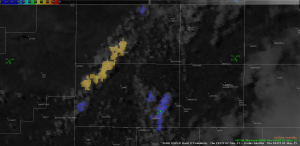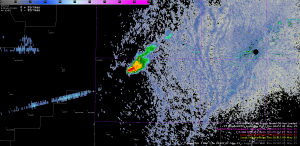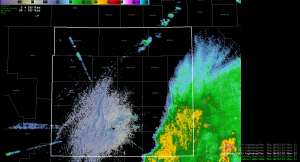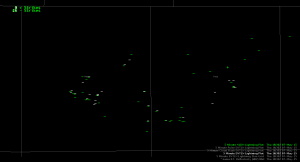Three NUCAPS soundings were sampled this afternoon around the Amarillo CWA. Several boundaries are observed in the CWA today…of most interest, a westward propagating outflow boundary from morning MCS and the dryline. The northern and central soundings were west of the ouflow boundary, but east of the dryline. Both of these soundings were about 8 degrees too cool (temperature) and 15 degrees too dry (dewpoint) at the surface. Once the profiles were modified, they yielded 1500 J/kg and 2770 J/kg CAPE, respectively. The sounding behind the dryline was a close match to observations…and little modification to the sounding was needed.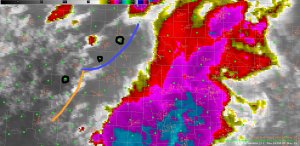
Blue line is westward moving outflow…dryline is marked in yellow. NUCAPS soundings modified are circled in black.
ALEXANDER’S DARK BAND/LYNFORD

